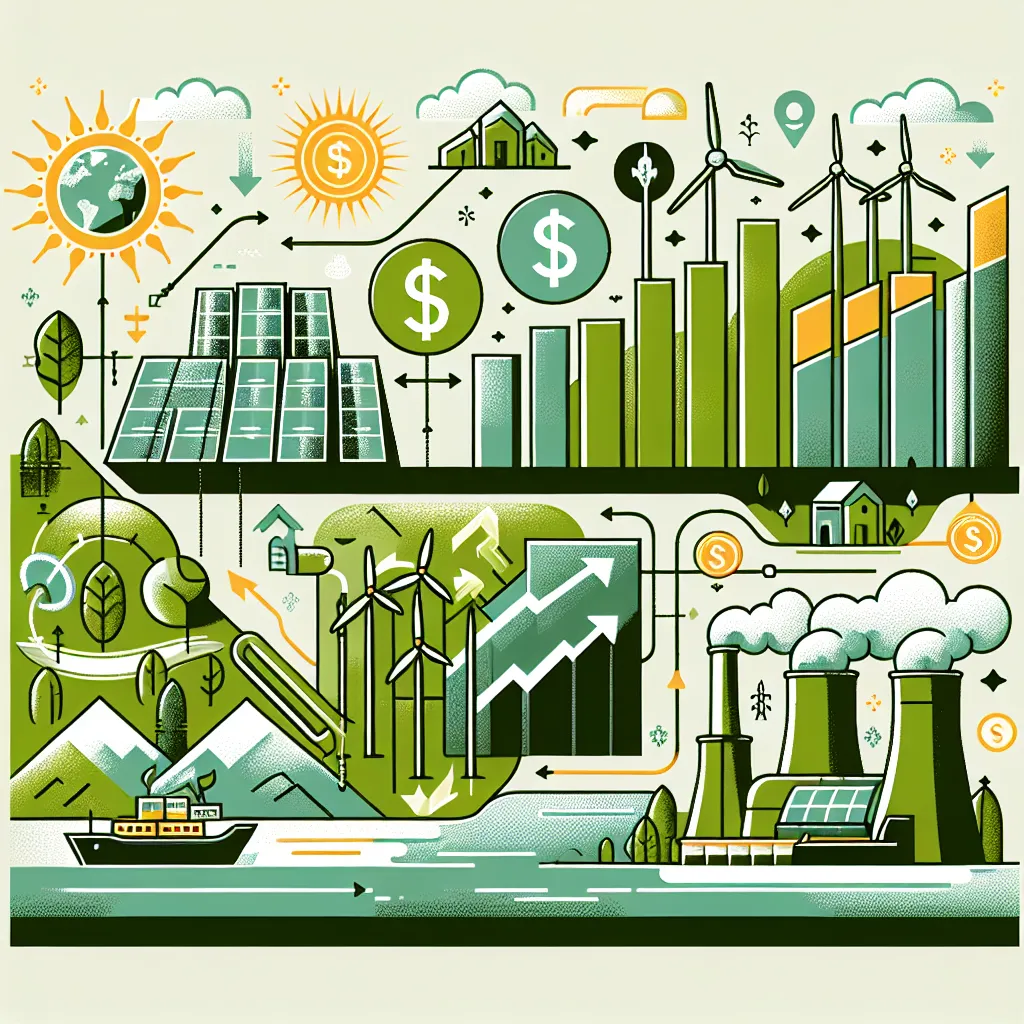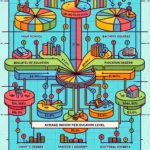Welcome to our IELTS Reading practice session focused on the topic “How Sustainable Energy Can Drive Economic Growth.” This comprehensive guide will provide you with a full IELTS Reading test, complete with three passages of increasing difficulty, along with a variety of question types and answer keys. Let’s dive in and enhance your IELTS Reading skills!
 Sustainable energy driving economic growth
Sustainable energy driving economic growth
Introduction
Sustainable energy is a crucial topic in today’s world, playing a significant role in economic development and environmental protection. This IELTS Reading practice will help you explore this subject while improving your reading comprehension skills. Remember to time yourself and aim to complete all three passages within 60 minutes, as you would in the actual IELTS test.
Passage 1 – Easy Text
The Promise of Sustainable Energy
Sustainable energy sources, such as solar, wind, and hydroelectric power, are rapidly transforming the global energy landscape. These renewable resources offer a clean alternative to fossil fuels, reducing greenhouse gas emissions and mitigating climate change. As countries worldwide seek to diversify their energy portfolios and reduce their carbon footprints, sustainable energy technologies are becoming increasingly cost-competitive with traditional energy sources.
The economic implications of this shift are profound. Investments in renewable energy infrastructure create jobs across various sectors, from manufacturing and construction to research and development. Moreover, as renewable technologies become more efficient and affordable, they can help reduce energy costs for businesses and consumers alike, freeing up capital for other economic activities.
In many developing countries, sustainable energy projects are leapfrogging traditional grid systems, bringing electricity to remote areas that were previously unserved. This access to reliable power can catalyze economic development by enabling new businesses, improving education, and enhancing healthcare services.
However, the transition to sustainable energy is not without challenges. Intermittency issues with solar and wind power require innovative storage solutions, and upgrading existing energy infrastructure can be costly. Despite these hurdles, the long-term economic benefits of sustainable energy are increasingly clear, making it a cornerstone of future economic growth strategies.
Questions 1-5
Do the following statements agree with the information given in the reading passage?
Write:
TRUE if the statement agrees with the information
FALSE if the statement contradicts the information
NOT GIVEN if there is no information on this
- Sustainable energy sources are more expensive than fossil fuels.
- Investment in renewable energy creates employment opportunities in multiple sectors.
- Developing countries are bypassing traditional energy systems in favor of sustainable alternatives.
- All countries have agreed to completely phase out fossil fuels by 2030.
- The transition to sustainable energy faces no significant challenges.
Questions 6-10
Complete the sentences below.
Choose NO MORE THAN TWO WORDS from the passage for each answer.
- Sustainable energy helps countries reduce their .
- As renewable technologies improve, they can help ___ energy costs for businesses and consumers.
- In developing countries, sustainable energy projects can bring power to .
- Access to reliable power can ___ economic development in previously unserved areas.
- Solar and wind power face ___ issues that require innovative storage solutions.
Passage 2 – Medium Text
The Economic Ripple Effects of Sustainable Energy
The adoption of sustainable energy technologies is not merely an environmental imperative; it has become a powerful driver of economic growth and innovation. As governments and businesses increasingly recognize the potential of renewable energy sources, a complex ecosystem of industries and services has emerged, creating a virtuous cycle of economic development.
One of the most significant economic benefits of sustainable energy is job creation. The renewable energy sector has become a major employer, with jobs spanning from manufacturing and installation to maintenance and research. According to the International Renewable Energy Agency (IRENA), the sector employed 11.5 million people globally in 2019, a figure that continues to grow. These jobs are often high-skilled and well-paid, contributing to the development of a knowledge-based economy.
Moreover, the sustainable energy industry has sparked innovation in adjacent sectors. For instance, the need for energy storage solutions has accelerated advancements in battery technology, which in turn has applications in electric vehicles and consumer electronics. This cross-pollination of technologies creates new markets and business opportunities, further stimulating economic growth.
The localization of energy production through renewable sources can also have profound economic impacts. By reducing dependence on imported fossil fuels, countries can improve their balance of trade and energy security. This localization effect extends to communities, where distributed energy systems like rooftop solar panels can empower consumers to become energy producers, potentially reducing energy costs and creating new income streams.
Sustainable energy projects often require significant upfront investments, which can stimulate economic activity. Large-scale projects like offshore wind farms or solar arrays generate demand for a wide range of goods and services, from construction materials to specialized engineering expertise. This investment ripples through the economy, creating indirect jobs and spurring growth in supporting industries.
The economic benefits of sustainable energy are not limited to developed economies. In fact, many developing countries are leveraging renewable resources to power their economic growth. By bypassing traditional fossil fuel infrastructure, these nations can avoid the environmental and health costs associated with coal and oil, while building modern, efficient energy systems that support long-term economic development.
However, it’s important to note that the transition to sustainable energy is not without challenges. The intermittent nature of some renewable sources requires careful grid management and investment in storage technologies. Additionally, some regions heavily dependent on fossil fuel industries may face economic disruption as the energy landscape shifts. Policymakers and business leaders must work to ensure a just transition that addresses these challenges while maximizing the economic potential of sustainable energy.
Questions 11-15
Choose the correct letter, A, B, C, or D.
-
According to the passage, the sustainable energy sector:
A) Only creates low-skilled jobs
B) Employs fewer people than traditional energy sectors
C) Contributes to the development of a knowledge-based economy
D) Has seen a decline in job opportunities -
The development of energy storage solutions has:
A) Only benefited the renewable energy sector
B) Had no impact on other industries
C) Led to advancements in unrelated technologies
D) Slowed down the adoption of electric vehicles -
Localizing energy production through renewable sources can:
A) Increase a country’s dependence on imported fuels
B) Worsen a country’s balance of trade
C) Improve energy security
D) Reduce community involvement in energy production -
In developing countries, sustainable energy:
A) Is too expensive to implement
B) Allows countries to avoid some negative effects of fossil fuels
C) Has no impact on long-term economic development
D) Is less efficient than traditional energy systems -
The transition to sustainable energy:
A) Is completely without challenges
B) Only affects developed economies
C) May cause disruption in regions dependent on fossil fuels
D) Has no impact on grid management
Questions 16-20
Complete the summary below.
Choose NO MORE THAN TWO WORDS from the passage for each answer.
The sustainable energy sector creates a (16) of economic development by generating jobs and spurring innovation. It contributes to a (17) economy and stimulates advancements in related fields. The (18) of energy production can improve a country’s economic situation by reducing reliance on imported fuels. While sustainable energy projects often require large (19) , these investments can benefit the broader economy. However, the transition also presents challenges, including the need for improved grid management and ensuring a (20) ___ for affected industries and workers.
Passage 3 – Hard Text
Sustainable Energy: Catalyzing Economic Paradigm Shifts
The inexorable shift towards sustainable energy sources is not merely a technological transition; it represents a fundamental paradigm shift in how economies function and grow. This transformation is reshaping industries, altering global economic dynamics, and creating new pathways for development that were previously unimaginable. As we delve deeper into the economic implications of this energy revolution, it becomes clear that sustainable energy is not just a component of future economic growth—it is increasingly becoming its primary catalyst.
The economic impact of sustainable energy extends far beyond the immediate benefits of job creation and reduced energy costs. It is precipitating a wholesale reimagining of economic structures and value chains. For instance, the concept of the circular economy, which aims to eliminate waste and maximize resource efficiency, is gaining traction partly due to the influence of renewable energy systems. These systems demonstrate the viability of closed-loop resource cycles, inspiring similar approaches in manufacturing, agriculture, and urban development.
Moreover, the democratization of energy production through technologies like rooftop solar and small-scale wind turbines is eroding the traditional centralized utility model. This decentralization is giving rise to new business models and market structures, such as peer-to-peer energy trading platforms and community-owned energy projects. These innovations are not only disrupting incumbent industries but also redistributing economic power and fostering local economic resilience.
The spillover effects of sustainable energy research and development are equally profound. Advancements in materials science driven by solar cell research, for example, have applications ranging from more efficient electronics to advanced medical devices. Similarly, the computational models developed for optimizing wind farm layouts are being adapted for urban planning and logistics. This cross-fertilization of knowledge and technology is accelerating innovation across multiple sectors, creating new industries and revitalizing old ones.
In the realm of international economics, sustainable energy is reshaping geopolitical dynamics. Countries rich in renewable resources—such as abundant sunlight, wind, or geothermal activity—are emerging as new energy superpowers. This shift is recalibrating global trade relationships and investment flows. Furthermore, as the cost of renewable technologies continues to plummet, it is leveling the playing field between developed and developing nations, offering the latter a chance to leapfrog costly and polluting stages of industrialization.
The financial sector, too, is undergoing a transformation in response to the sustainable energy revolution. The rise of green bonds, sustainability-linked loans, and other innovative financial instruments is channeling capital towards renewable energy projects and other sustainable initiatives. This shift in capital allocation is not only funding the energy transition but also reconfiguring risk assessment models and investment strategies across the financial industry.
However, it would be remiss to ignore the challenges and potential downsides of this economic transformation. The rapid obsolescence of certain skills and industries can lead to structural unemployment and regional economic disparities. There’s also the risk of creating new forms of resource dependency, particularly related to the materials required for renewable energy technologies. Addressing these issues requires proactive policies and strategies to ensure an equitable and just transition.
As we navigate this economic paradigm shift, it’s becoming increasingly clear that sustainable energy is not just a technological solution to environmental challenges—it’s a powerful engine of economic innovation and growth. By embracing this transition, economies can unlock new sources of productivity, create more resilient economic systems, and pave the way for a more sustainable and prosperous future. The countries and businesses that recognize and capitalize on this potential stand to thrive in the new economic landscape shaped by sustainable energy.
Questions 21-26
Choose the correct letter, A, B, C, or D.
-
According to the passage, the shift towards sustainable energy:
A) Is solely a technological change
B) Represents a fundamental change in economic functioning
C) Has minimal impact on global economic dynamics
D) Only affects the energy sector -
The concept of the circular economy is:
A) Unrelated to sustainable energy systems
B) Only applicable to the manufacturing sector
C) Gaining popularity partly due to renewable energy systems
D) A replacement for sustainable energy initiatives -
The democratization of energy production is:
A) Strengthening the traditional centralized utility model
B) Having no effect on existing business models
C) Only possible in developed countries
D) Giving rise to new business models and market structures -
Advancements in sustainable energy research:
A) Are limited to the energy sector
B) Have no applications in other industries
C) Are slowing down innovation in other sectors
D) Are accelerating innovation across multiple sectors -
In international economics, sustainable energy is:
A) Maintaining the status quo of energy superpowers
B) Widening the gap between developed and developing nations
C) Recalibrating global trade relationships
D) Having no impact on geopolitical dynamics -
The financial sector’s response to the sustainable energy revolution includes:
A) Avoiding any investment in renewable energy projects
B) The development of new financial instruments like green bonds
C) Maintaining traditional risk assessment models
D) Decreasing capital allocation to sustainable initiatives
Questions 27-35
Complete the summary below.
Choose NO MORE THAN TWO WORDS from the passage for each answer.
The transition to sustainable energy is causing a (27) in economic structures and value chains. It’s promoting concepts like the (28) , which aims to maximize resource efficiency. The (29) of energy production is challenging traditional models and creating new business opportunities. Research in sustainable energy has (30) in various sectors, accelerating innovation. In global economics, countries rich in renewable resources are becoming new (31) , altering international relationships. The decreasing cost of renewable technologies is (32) between nations at different stages of development. The financial sector is developing (33) to fund sustainable projects, which is changing investment strategies. However, this transition also poses challenges, such as the risk of (34) in certain industries. Addressing these issues requires (35) to ensure an equitable transition.
Answer Key
Passage 1
- FALSE
- TRUE
- TRUE
- NOT GIVEN
- FALSE
- carbon footprints
- reduce
- remote areas
- catalyze
- intermittency
Passage 2
- C
- C
- C
- B
- C
- virtuous cycle
- knowledge-based
- localization
- upfront investments
- just transition
Passage 3
- B
- C
- D
- D
- C
- B
- paradigm shift
- circular economy
- democratization
- spillover effects
- energy superpowers
- leveling the playing field
- green bonds
- structural unemployment
- proactive policies
This IELTS Reading practice test has provided you with a comprehensive exploration of how sustainable energy can drive economic growth. By working through these passages and questions, you’ve not only enhanced your understanding of this important topic but also honed your reading skills for the IELTS exam.
Remember, success in IELTS Reading comes with consistent practice and familiarity with various question types. Keep practicing with diverse topics and time yourself to improve your speed and accuracy. For more IELTS preparation resources, check out our articles on the role of renewable energy in developing countries and how renewable energy can help achieve the UN’s Sustainable Development Goals.
Good luck with your IELTS preparation!


